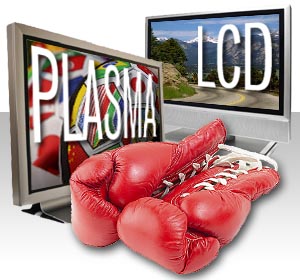Watching is one thing that many a people cross the world admire most. This because it provides entertainment that in most cases after encountering the worst day of work, enables one to refresh the mind. It can be done through different screen sizes, designs as well as makes such as LCD, plasma as well as many others.
Plasma screen TV
 In the current past, there are various technologies behind the creation of televisions including plasma and LCD. Plasma TV consists of various minute glass cells which are charged through the combination of neon as well xenon. Featuring in the cells are colored phosphors that release light. In every cell, features red, blue as well as green colored phosphors respectively. The plasma cells are able to produce unseen ultra-violet light when triggered by an electrode. Eventually the image displayed on screen is as a result of UV light beating the phosphors at the rear of the display generating the pixel that in turn creates the image.
In the current past, there are various technologies behind the creation of televisions including plasma and LCD. Plasma TV consists of various minute glass cells which are charged through the combination of neon as well xenon. Featuring in the cells are colored phosphors that release light. In every cell, features red, blue as well as green colored phosphors respectively. The plasma cells are able to produce unseen ultra-violet light when triggered by an electrode. Eventually the image displayed on screen is as a result of UV light beating the phosphors at the rear of the display generating the pixel that in turn creates the image.
Liquid Crystal Display (LCD)
On the other hand, the LCD technology operates pretty different. It is mainly based on the hovering liquid flanked by two crystal clear panels. The liquid is composed of crystals which rearrange themselves to enable the passage of light through the panel as well as blocking the light especially when the crystals are triggered by voltage. The illustrated process resembles the process of switching on and off numerous light bulbs. At the back of the panels are the fluorescent tubes that are popularly known for proving the light basis.
Advantages and disadvantage of plasma as well as LCD screen
The ratio of the contrast is the dimension of the brightest white alongside the darkest black that the television can generate. It is easier to distinguish information on the screen especially when the contrast ratio is high. When both contrast ratios of LCD and Plasma TV is measured using the same technique, the LCD dimension is 350-450:1 while plasma TV measures 200:1
The quantity of greyness in a color fully explains the color saturation in a TV. If color grey is abundant, the saturation drastically decreases. Due to the availability of light blocking technique in Plasma, it makes it more advantageous to LCD particularly in color saturation. With plasma, there are capabilities of turning off the pixels when they are not active. This is done to in order to prevent stray light from reducing color saturation. Generating a genuine color with the LCD is very challenging due to the presence of stray light.
Plasma TVs are available between 60 inches and 32 inches. On the other hand, LCD screen ranges from 13 inches to 46 inches. With LCD screen are targeting as well as individuals with low income unlike the plasma that are larger in size hence very costly.
In conclusion both the screens are impressive due to their wonderful features that enhance the watching encounter. Both the technologies are available in markets all over the world in a variety of designs, size as well as features.
Crystal J. Briscoe is from Exams King. Looking for 3102.1 exam help? Let’s take advantage of Exams King self paced 3101.1 training and pass your IT exams on first try.










Comments